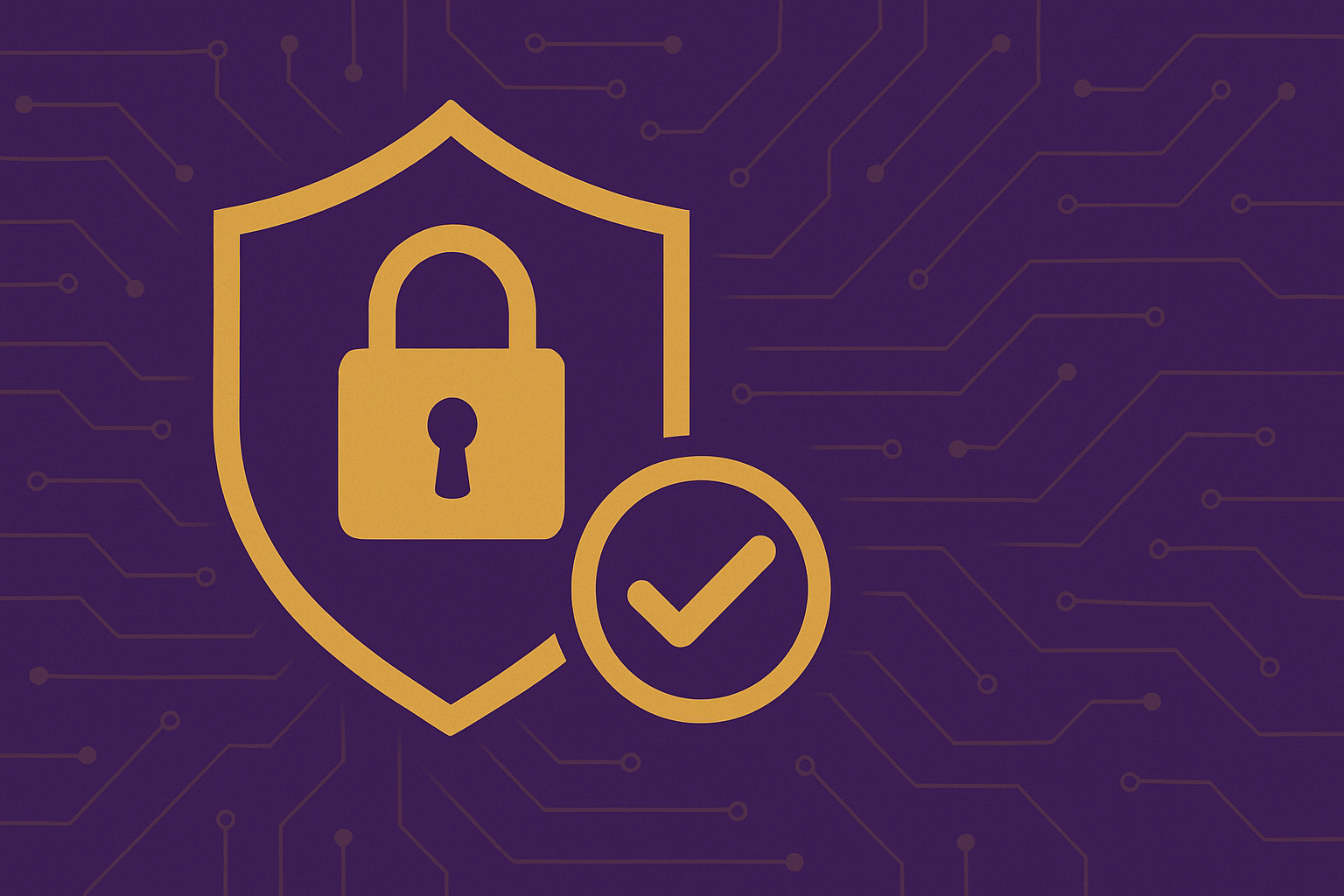In today’s digital world, businesses of all sizes are exposed to a variety of cyber threats. Whether you’re a small startup or a medium-sized enterprise, protecting your sensitive data and digital assets has become more critical than ever. This is where cybersecurity certifications such as Cyber Essentials Plus and ISO 27001:2022 come into play.
These frameworks offer businesses the guidance they need to strengthen their cybersecurity posture, but they each take different approaches to achieving this goal. For small and medium-sized businesses (SMBs), choosing between Cyber Essentials Plus and ISO 27001 can be a daunting task. Understanding the differences, benefits, and limitations of each certification is crucial to making the right decision.
What is Cyber Essentials Plus?
Cyber Essentials is a UK government-backed certification scheme designed to help organisations protect themselves against the most common cyber-attacks. Cyber Essentials aims to establish a standard set of IT security requirements that minimise the likelihood of successful cyber-attacks.
Cyber Essentials Plus takes this a step further by adding an additional level of validation. While Cyber Essentials provides an assessment based on a self-assessment questionnaire, Cyber Essentials Plus involves an independent, hands-on technical audit carried out by an accredited third party. This means that Cyber Essentials Plus is a more comprehensive and stringent certification, offering a higher level of assurance that an organisation has the right security measures in place to protect its systems from common cyber threats.
Free cyber liability insurance is also available to certain qualifying organisations who successfully pass and maintain a valid cyber essentials plus certificate. This can be a powerful safety net for those that need it.
The focus of both Cyber Essentials and Cyber Essentials Plus is on five basic security controls that address common vulnerabilities, including:
- Firewalls and Routers: Ensuring devices are properly configured to protect internal systems from external threats.
- Secure Configuration: Establishing a baseline of secure configurations for devices and software to reduce the risk of exploitation.
- User Access Control: Managing and controlling who can access the network and data, enforcing policies around least privilege.
- Malware Protection: Implementing appropriate measures to prevent, detect, and respond to malware.
- Patch Management: Keeping software up to date with the latest security patches to avoid vulnerabilities that attackers can exploit.
Cyber Essentials Plus is particularly well-suited for small and medium-sized businesses that need to demonstrate a commitment to cybersecurity but may not yet have the resources or infrastructure to implement a more complex information security management system like ISO 27001.
What is ISO 27001:2022?
ISO/IEC 27001:2022 is an international standard that outlines the requirements for an Information Security Management System (ISMS). It is part of the broader ISO 27000 series of standards, which cover various aspects of information security. ISO 27001 provides a comprehensive framework for managing information security risks, with the goal of establishing, implementing, operating, monitoring, reviewing, maintaining, and improving an ISMS.
Unlike Cyber Essentials and Cyber Essentials Plus, which focus on a specific set of controls and technical measures, ISO 27001 adopts a more holistic and risk-based approach. It requires organisations to systematically assess their information security risks and implement a range of technical, physical, and organisational controls to address those risks. The standard defines 93 controls across 14 categories, which cover areas such as:
- Organisational Controls: Policies, roles, and responsibilities for managing information security.
- People Controls: Training, awareness, and behaviour management to support secure practices.
- Physical Controls: Security measures to protect facilities and physical assets from unauthorized access, damage, or loss.
- Technical Controls: Safeguards for securing IT systems, applications, and data.
ISO 27001 is a risk management framework that requires organisations to continuously assess their security posture and adapt their policies and controls as needed. Its focus on continuous improvement helps organisations stay ahead of evolving threats.
Key Differences Between Cyber Essentials Plus and ISO 27001
Both Cyber Essentials Plus and ISO 27001 are valuable certifications for businesses looking to enhance their cybersecurity posture, but they differ significantly in terms of scope, complexity, and approach.
1. Scope and Complexity
- Cyber Essentials Plus is a more straightforward certification with a narrow scope. It is focused primarily on technical controls and is designed to protect organisations from common cyber threats. The process involves a self-assessment followed by an independent verification of security measures. It is relatively easy for small and medium-sized businesses to achieve, and the certification can be a good starting point for organisations looking to improve their cybersecurity practices.
- ISO 27001, on the other hand, is much more comprehensive. It requires organisations to implement an entire Information Security Management System (ISMS) that includes a wide range of technical, physical, and organisational controls. Achieving ISO 27001 requires significant effort and resources to establish risk assessments, policies, procedures, and documentation that align with the standard’s requirements. As such, ISO 27001 is better suited to larger organisations or businesses with more mature security practices.
2. Approach to Cybersecurity
- Cyber Essentials Plus is more prescriptive and focused on a set of specific security controls, such as firewalls, malware protection, and patch management. It is designed to address common vulnerabilities and threats that most organisations face, and it provides a clear checklist of measures that need to be in place to achieve certification.
- ISO 27001 adopts a more flexible, risk-based approach. Organisations are required to assess their own information security risks and implement controls accordingly. While ISO 27001 does include a set of controls, the standard is designed to be adaptable to different types of organisations and industries. This means that businesses must demonstrate a deeper understanding of their risks and security needs.
3. Validation and Certification Process
- Cyber Essentials Plus requires a third-party auditor to verify that the business has implemented the necessary security controls. This validation is hands-on and involves testing the systems and configurations in place. However, the audit is typically quicker and less invasive than the ISO 27001 certification process.
- ISO 27001 requires a thorough external audit, which evaluates the organisation’s entire ISMS, including documentation, policies, procedures, and controls. The certification process is more rigorous and time-consuming, often involving multiple stages of review and continuous monitoring. ISO 27001 certification also requires regular surveillance audits to ensure ongoing compliance.
4. Cost and Resources
- Cyber Essentials Plus is generally less expensive and less resource-intensive than ISO 27001. The certification process is more streamlined, and businesses can typically achieve it with a smaller team and fewer resources. This makes Cyber Essentials Plus a great option for SMBs with limited budgets and staff.
- ISO 27001 can be a more costly and resource-intensive process. Implementing an ISMS requires investment in both time and money, and many organisations may need to hire external consultants or dedicate internal resources to support the certification effort. ISO 27001 is often better suited for businesses with more mature security practices and the capacity to invest in long-term information security management.
Pros and Cons for Small and Medium-Sized Businesses
Cyber Essentials Plus
Pros:
- Quick and cost-effective way to demonstrate a basic level of cybersecurity.
- Ideal for SMBs with limited resources and those that need a certification to meet contractual or legal requirements.
- Covers key controls that protect against the most common cyber threats.
- Easier to maintain and achieve compared to ISO 27001.
- Free cyber liability insurance for qualifying orgs included in successful certification
Cons:
- Focused only on technical controls and common threats, without addressing broader organisational and physical security measures.
- May not be sufficient for businesses that handle sensitive data or operate in industries with more complex security needs.
- Requirements are continually updated meaning organisations need to keep up to date on the latest requirements to stay ahead.
ISO 27001
Pros:
- Provides a comprehensive and risk-based approach to managing information security.
- Suitable for businesses of all sizes and sectors, especially those handling sensitive data or requiring a higher level of security assurance.
- Helps improve overall security governance, processes, and documentation.
- Widely recognised internationally, adding credibility and trust to your organisation.
Cons:
- More time-consuming and expensive to implement and maintain compared to Cyber Essentials Plus.
- Requires significant internal resources to establish and maintain the ISMS.
- May be too complex for small businesses with limited security infrastructure.
Which One is Right for Your Business?
For small and medium-sized businesses, the choice between Cyber Essentials Plus and ISO 27001 largely depends on the specific needs of the organisation, the resources available, and the level of cybersecurity maturity.
- If you’re a smaller business looking for a straightforward and affordable way to improve your cybersecurity and meet basic compliance requirements, Cyber Essentials Plus may be the right choice. It will help you establish a strong foundation of security practices and protect against common cyber-attacks.
- However, if your business deals with sensitive data, operates in highly regulated sectors, or requires a more comprehensive approach to information security, ISO 27001 might be the better option. The investment in time, resources, and cost will pay off in the long run by providing a robust security framework that can scale with your business.
Conclusion
Both Cyber Essentials Plus and ISO 27001 play important roles in enhancing cybersecurity for small and medium-sized businesses, but they offer different levels of protection and require varying degrees of investment. Cyber Essentials Plus is a great starting point for businesses that want to improve their security posture quickly and affordably, while ISO 27001 is better suited for organisations seeking a more comprehensive, ongoing approach to information security. By understanding the differences and benefits of each, you can make an informed decision that aligns with your business’s cybersecurity needs and long-term goals.
Interested in finding out more about which solution might be right for you? Or hearing about how Clear Path Security can reduce your cost and time to compliance as well as ensuring your compliance programme adds the right value in line with your organisations goals?


Comments are closed